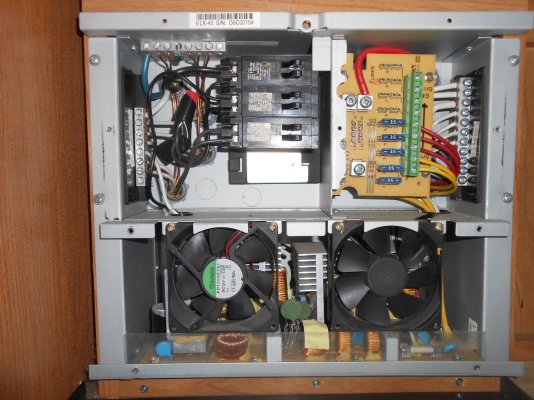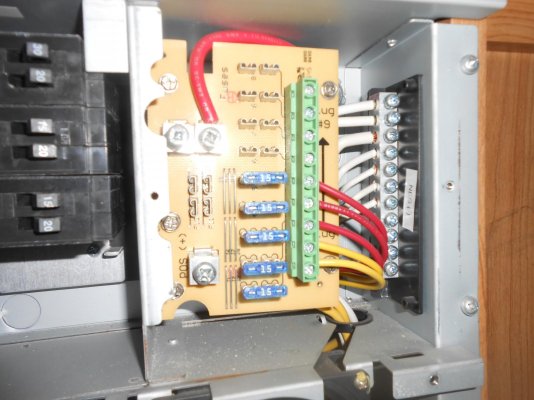oldcarguy
Senior Member
Forum searches haven't turned up an answer to these questions:
1. Appears the converter in our 2307C is not charging the batteries when the trailer is connected to shore power / generator. Found a couple of threads that reference a pair of 30 amp inline fuses behind the converter face plate in the leads that route charging voltage to the batteries - pulled the face plate & don't find those fuses.
Circuit board with the other fuses (id'ed as the "DC Distribution Panel" in the Elixir owner's manual) has 4 female spade clips to the left of the vertical fuse stack oriented such that a pair of fuses would plug into them. The manual's overall "front view" illustration appears to show them as the location of a pair of 30 amp fuses (F10 & F11), but there's no indication fuses have ever been installed there.
I find no info in the manual regarding F10 & F11 - anyone know for certain if those ARE the battery charging circuit fuses? If so, any reason why there wouldn't be fuses installed?
Photos of the converter with the face plate removed are attached.
2. Elixir owner's manual "Operation" section has an entry that says "for faster battery charge, turn on the converter and reduce DC appliance load", but I can find no further reference as to how to "turn on the converter" - I've always assumed that the converter activated automatically when the trailer's plugged into a 110/120 Volt AC source (shore power or generator) - is this not correct?
3. If the converter is NOT providing 12 volt DC charging voltage to the batteries when an AC source is hooked up, will connecting a charger to the batteries without disconnecting the positive battery cable cause a problem?
1. Appears the converter in our 2307C is not charging the batteries when the trailer is connected to shore power / generator. Found a couple of threads that reference a pair of 30 amp inline fuses behind the converter face plate in the leads that route charging voltage to the batteries - pulled the face plate & don't find those fuses.
Circuit board with the other fuses (id'ed as the "DC Distribution Panel" in the Elixir owner's manual) has 4 female spade clips to the left of the vertical fuse stack oriented such that a pair of fuses would plug into them. The manual's overall "front view" illustration appears to show them as the location of a pair of 30 amp fuses (F10 & F11), but there's no indication fuses have ever been installed there.
I find no info in the manual regarding F10 & F11 - anyone know for certain if those ARE the battery charging circuit fuses? If so, any reason why there wouldn't be fuses installed?
Photos of the converter with the face plate removed are attached.
2. Elixir owner's manual "Operation" section has an entry that says "for faster battery charge, turn on the converter and reduce DC appliance load", but I can find no further reference as to how to "turn on the converter" - I've always assumed that the converter activated automatically when the trailer's plugged into a 110/120 Volt AC source (shore power or generator) - is this not correct?
3. If the converter is NOT providing 12 volt DC charging voltage to the batteries when an AC source is hooked up, will connecting a charger to the batteries without disconnecting the positive battery cable cause a problem?
Attachments
Last edited:



